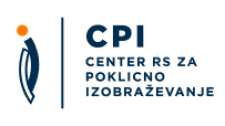Archived
Avtokaroserist / avtokaroseristka
Selected qualifications
| Name of qualification | Name of qualification: Avtokaroserist / avtokaroseristkaAdd to comparison |
|---|---|
| Translated title (no legal status) | Translated title: Vehicle bodywork repairer |
| Type of qualification | Type of qualification: Upper secondary vocational education |
| Category of qualification | Category of qualification: Educational Qualification |
| Type of education | Type of education: Upper secondary vocational education |
| Duration |
Duration of education:
3 years
|
| Credits | Credits: 180 credits |
| Admission requirements |
Entry conditions:
|
| ISCED field |
Field:
Engineering, manufacturing and construction
|
| ISCED subfield | subfield: motor vehicles, ships and aircraft |
| Qualification level |
SQF Level:
SQF 4 |
Certificate holders will be able to:
- replace and repair bodywork parts;
- maintain, repair, make and remodel frames, bodywork and conversions;
- give diagnoses of the state of painted surfaces;
- prepare paints for applications;
- maintain, repair and make internal and external painted or varnished surfaces;
- maintain and repair ventilation and heating systems in vehicles;
- maintain, repair and replace exhaust systems on vehicles;
- equip motor vehicles with additional equipment and accessories;
- maintain and repair wheel rims;
- maintain, repair and produce anti-corrosion protection for a vehicle;
- advise customers in connection with repairs and maintenance work on a vehicle;
- cooperate well with co-workers, experts, clients and work effectively as part of a team;
- communicate with co-workers, experts, clients and demonstrate mastery of technical terminology;
- make rational, economical and careful use of energy, materials, tools and time, and look after the environment;
- prepare a safe working environment and protect their own health and the health of others.
Certificate holders build on their key vocational knowledge and abilities with key general knowledge in line with national standards.
Students' vocational abilities and skills and the fulfilment of conditions to obtain credits in accordance with the relevant education programme are established through verification and assessment. Assessment of students also takes into account non-formally acquired knowledge, which must be adequately demonstrated. Students are assessed using scores from 5 (excellent) to 1 (inadequate).
Students may progress to a higher year if at the end of the academic year they achieve a positive score in all general education subjects and technical modules for the year as set out in the school’s operational curriculum, and have completed all extracurricular activities and practical on-the-job training, or progress on the basis of a programme faculty decision. For students with individual learning agreements, passing an intermediate test is a condition for progression from the second year to the third year.
Avtokaroserist / avtokaroseristka
SQF 4
EQF 4
The Career path tab shows the possible career path within the selected qualification area, which is not the only one and is not mandatory. The actual transition between qualifications, which is determined by law, is defined in the Transition tab.
SQF 5 / EQF 4
SQF 6 / EQF 5
Secondary technical, vocational or vocational-technical education; master craftsman/foreman/shop manager examination (SQF level 5)
Students must successfully (i.e. with positive scores) complete general education subjects, compulsory and elective vocational modules, and the open part of the curriculum. They must also complete extracurricular activities, practical on-the-job training and a school-leaving examination.
A school-leaving examination comprises a written and oral examination of Slovene, a product/service, and an oral presentation.
Vocational and technical secondary schools and adult education institutions.
URL
Awarding body URL:Upcoming event
International Conference: 10 years of Slovenian Qualifications Framework
International Conference: 10 years of Slovenian Qualifications Framework Brdo Congress Centre, Predoslje 39, 4000...
© Center RS za poklicno izobraževanje, 2018. All rights reserved
Sitemap General legal notice Cookie Policy Production: ENKI






